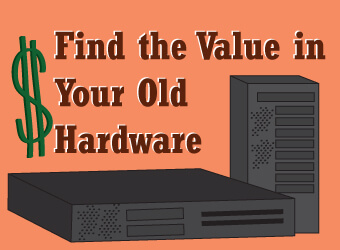Take 3 minutes to read this article
You need a reliable framework to maximize the value of your IT assets over time. From planning to acquisition – deployment to disposal, proper IT lifecycle management makes this possible. A solid IT asset disposition (ITAD) strategy is a crucial component of any IT lifecycle management strategy, but there is one area that is often overlooked in a typical ITAD conversation. Maybe that’s because most people believe it’s a little further up the stack in the Operate portion of the IT lifecycle, or maybe it’s overlooked because the team that manages ITAD is often not the same team that oversees IT service management and operations. This area is IT maintenance; specifically, where third party IT maintenance can bridge support gaps to drive down costs.
Extend the life of existing equipment
Third party IT maintenance let’s you recycle or resell your datacenter equipment on your schedule, not whenever the manufacturer thinks it’s time to upgrade. For some companies, a three-year cycle is perfect. Those companies upgrade on schedule, and it works for them; but if the financial crisis taught us anything, it’s that many companies work better with an extended refresh schedule of four years, five years, or more. If that’s you, you’re already painfully aware of the increases in support costs for years four and five. The OEMs hike support costs way up for equipment that’s actually much less expensive to support, but they do this to drive upgrades. Third party IT maintenance can keep your support costs in check so that you can use the equipment as long as you choose. But how do you know which assets to place under a third-party maintenance contract?
Know What You Have
Everybody has them. You know – those servers in the back of the datacenter that everyone knows are important, but nobody remembers why. Who owns those anyway? Knowing what you have is important, and this is what makes an IT asset disposition audit so valuable. An outside company arrives with no preconceptions and often finds valuable equipment that no one realized was there. Remember that feeling of finding a $20 bill on the ground when you were a kid? It’s a lot like that. A good audit also determines what equipment is still under OEM maintenance, what should be placed onto third party maintenance, and what you can gain through decommissioning.
Repurpose Instead of Replace
While using your equipment longer, you may choose to repurpose older equipment. Maybe you redeploy it with a less mission-critical application, or maybe you move it to a secondary site as a failover target. In many cases, these less mission-critical environments no longer require a two-hour or even a four-hour response time. Will your current maintenance provider allow you to downgrade your SLA? No. However, third party IT maintenance gives you exactly this sort of flexibility at 40-70% of the cost.
Recycle or Resell when You’re Ready
So you’ve used third party IT maintenance to extend the life of your equipment, and now you’re ready to upgrade. You’ve decided not to repurpose the equipment, but remember, as part of your IT asset disposition strategy, we’re still trying to maximize the value of all IT assets. Now is the time to update your audit, pull your list, and resell with expert help. Make sure that you work with someone who knows the market, protects your sensitive information, and minimizes as much waste as possible. Recycling or reselling your unused assets is an important part of good IT lifecycle management—just remember that leveraging the flexibility and scope of a third-party maintenance solution will empower you to decommission on your schedule.
Ready to find out what you’re missing? Schedule an ITAD audit with us today.





